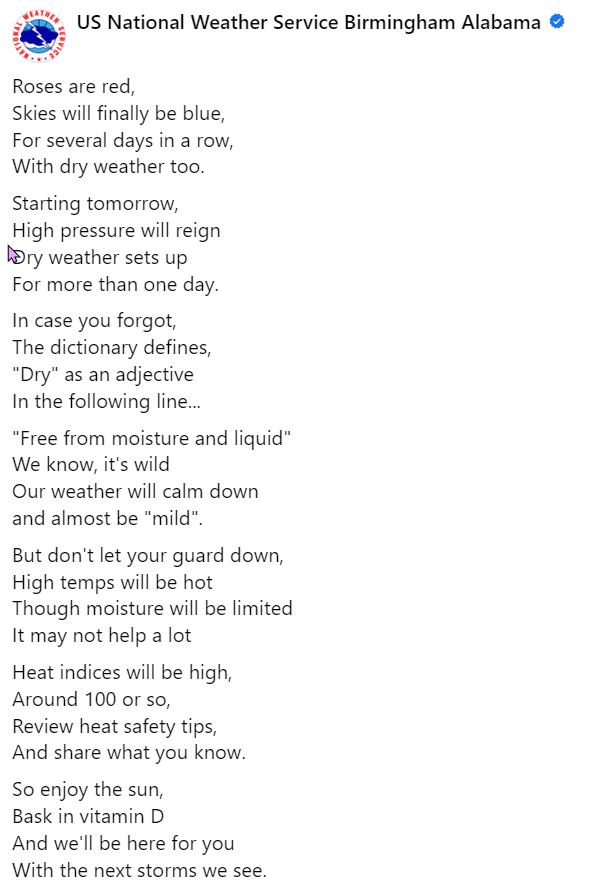









The National Weather Service: A Comprehensive Overview
The National Weather Service (NWS) plays a crucial role in safeguarding lives and property through its weather forecasts and warnings. This article explores the functions, technology, challenges, and future of the NWS, emphasizing its significance in an era of climate change and technological advancement.
Understanding the National Weather Service
The National Weather Service is an agency of the National Oceanic and Atmospheric Administration (NOAA) within the U.S. Department of Commerce. Established in 1870, its core mission is to provide timely and accurate weather information to protect life and property.
Key Functions of the NWS
-
Weather Forecasting: The NWS produces forecasts, which include daily weather predictions for all regions of the United States. These forecasts are vital for planning and preparedness.
-
Severe Weather Warnings: The agency issues alerts for severe weather events such as hurricanes, tornadoes, and floods, enabling communities to take protective measures.
-
Climate Monitoring: The NWS monitors climate patterns, providing data that helps in understanding long-term climate change impacts.
-
Educational Outreach: The NWS engages in public education about weather safety, promoting awareness of meteorological phenomena.
Technology and Tools Utilized by NWS
The NWS employs a range of advanced technologies to enhance its forecasting capabilities:
-
Radar Systems: Doppler radar is crucial for tracking precipitation and severe weather, allowing forecasters to issue timely warnings.
-
Satellite Imagery: Weather satellites provide comprehensive data on cloud cover, storm systems, and temperature patterns on a global scale.
-
Supercomputers: High-performance computing systems process vast amounts of meteorological data, enabling more accurate weather models and predictions.
-
Mobile Apps and Alert Systems: The NWS has developed mobile applications and alert systems that deliver real-time weather information directly to users.
Challenges Facing the National Weather Service
Despite its critical role, the NWS faces several challenges:
-
Funding and Resources: Budget constraints and resource allocation are ongoing issues that affect the scope of operations and technological upgrades.
-
Data Overload: The massive influx of data from various sources can lead to analysis paralysis, making it difficult for forecasters to extract actionable insights.
-
Public Perception: Misunderstandings about weather alerts can lead to public complacency or panic, emphasizing the need for effective communication strategies.
-
Climate Change: The increasing frequency and intensity of extreme weather events due to climate change pose a significant challenge for forecasting and preparedness.
Innovations and Future Directions
The NWS is continually evolving to improve its services and adapt to emerging challenges:
-
Artificial Intelligence: AI is being integrated into forecasting models to enhance predictive accuracy and efficiency in processing data.
-
Community Engagement: The NWS is focusing on building stronger relationships with local communities to better understand their unique needs and improve the relevance of weather information.
-
Partnerships: Collaborations with academic institutions, private sector companies, and other governmental agencies are enhancing forecasting capabilities and technological advancements.
-
Climate Adaptation Strategies: The NWS is working on developing strategies that not only address immediate weather-related challenges but also long-term climate adaptation.
The Importance of the National Weather Service
The work of the NWS transcends mere weather prediction; it is instrumental in disaster preparedness and response. By providing timely and accurate information, the NWS helps:
-
Save Lives: Early warnings can significantly reduce casualties during severe weather events.
-
Protect Property: Accurate forecasts enable individuals and businesses to take preventive measures, mitigating financial losses.
-
Support Economic Stability: Agriculture, transportation, and various industries rely heavily on accurate weather information for operational planning.
Conclusion
As we navigate an increasingly unpredictable climate landscape, the National Weather Service remains a cornerstone of safety and preparedness in the United States. Its commitment to leveraging technology and fostering community engagement will be vital as it faces the challenges of the future. Continued support and innovation within the NWS are crucial for ensuring that it can effectively fulfill its mission of protecting lives and property for generations to come.
